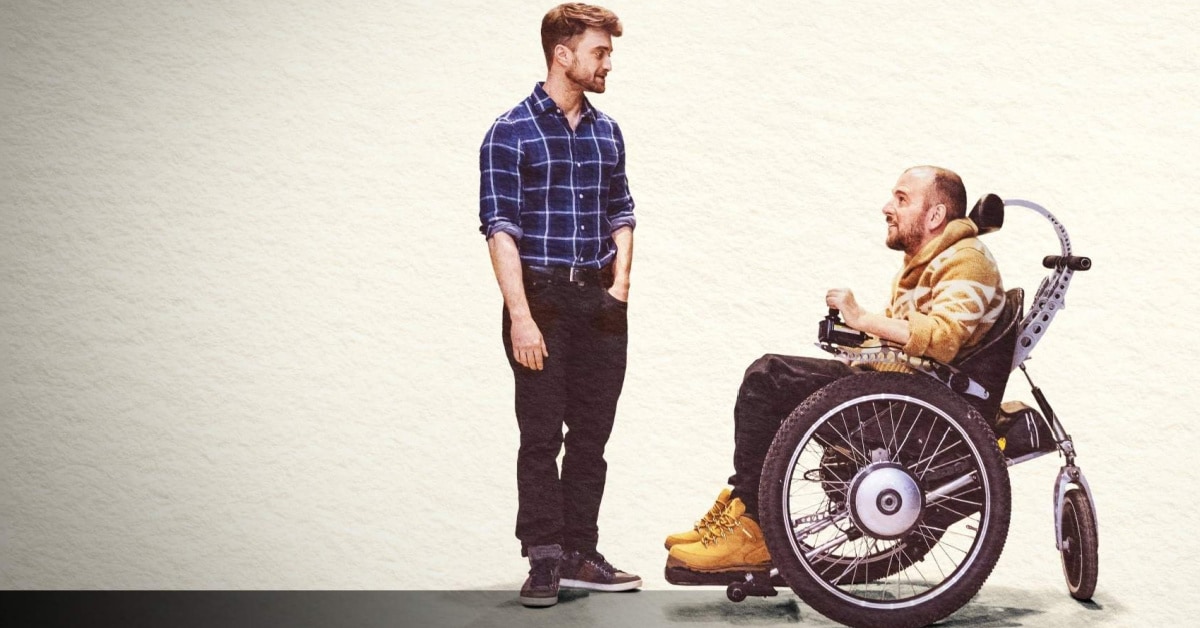
People all over the world know and love the story of Harry Potter and its magical world. Now many fans are learning another side of the story through the newly released movie. David Holmes: the boy who lived. The documentary looks at the friendship that formed between Harry Potter star Daniel Radcliffe and David Holmes, his lead double, who suffered a spinal cord injury on the set of one of the films.
The film offers insight into how Holmes got into the stunt business and shows behind-the-scenes footage from the Harry Potter films. Holmes usually tested the stunts first to see whether or not they were safe for Radcliffe to perform. From the many shots of riding broomsticks, falling from great heights, and fighting in fight scenes, Holmes’ dedication shines through and is one of the roots of a brotherly relationship that evolved between Radcliffe and Holmes.
Then came the moment he was waiting for and also fearing: a clip of a trick rehearsal that went wrong and ultimately changed the trajectory of Holmes’ life. The scene portrays the impact of an explosion in Harry Potter and the Deathly Hallows – Part 1, released in 2009. During the stunt, Holmes is pulled backwards by a harness attached to an overweight pulley system. He is pushed against a wall and the force of the impact fractures his neck at the C6-7 level. Although the documentary does not show graphic details, it is still emotional to witness the moment that caused his injury, knowing first-hand the difficult recovery that will follow.
The following scenes show Holmes in the hospital recovering from his accident, surrounded by family and friends, including Radcliffe. The film offers a deeply personal look at how a spinal cord injury affects not only Holmes but also his loved ones. His mother is angry and wants to hold someone responsible for his accident. Stunt coordinator Greg Powell regrets it to this day. Holmes ultimately decides not to sue Warner Bros. Entertainment, which produced the Harry Potter films, but says in the documentary that the studio’s insurance policy “took care of him.”
Recently injured, Holmes remains extremely optimistic during his recovery. He works to raise awareness about stunt safety and travels the world. But he also documents his concern about the further loss of function he has experienced due to a syrinx, a rare complication in which a cyst causes pressure on the spinal cord. I could personally identify with this part of the movie. After suffering from a T3 spinal cord injury for over 10 years, I developed a syrinx in my cervical spine which caused permanent weakness in my hands. I resonated with the anxiety and pain that Holmes feels when he loses strength and function.
My criticism of the film is that the second part, focused on his recovery, lost my interest and would be stronger if those parts were condensed. It shows a lot about how Holmes adapts to his disability, the impact his injury has on others, and how he accepts his new reality. If I had recently been injured or had never heard of SCI, I would have been more intrigued. But because I’ve been injured most of my life and am surrounded by disabilities on a regular basis, both personally and professionally, I craved more behind-the-scenes content about filming. Harry Potter.
Still, the film offers a realistic portrayal of disability, something rare in mainstream productions, and is worth a watch. It shows that anyone can be part of this community in the blink of an eye. It doesn’t shy away from the harsh realities of life with a disability: chronic pain, dependency on caregivers, and the impact on mental health. But it also serves as proof that life goes on. Promise that with a strong support system and an open mind, you can find purpose again.






